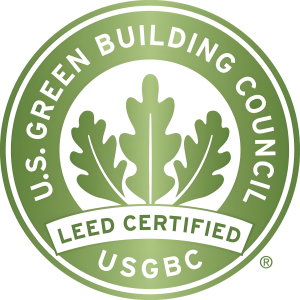LEED-certified office buildings found to bring high sale premiums
Feature image: The LEED Gold Fremont Office Building in Seattle, Washington. Photo credit: Built Work Photography/Meghan Montgomery.
The business case for LEED certification has always been a strong one, and the data keeps rolling in to support what users know about LEED: that the triple bottom line of people, planet and profit motivates the market.
In a follow-up to Part 1 of its recent report, “Green Is Good,” USGBC Platinum-level member Cushman and Wakefield has released “Sustainability’s Impact on Office Investment Pricing.” While Part 1 addressed the premium in rental income generated by a LEED certification for an office building, Part 2 examines how LEED certification affects sale pricing.
Bringing increased value in both cities and suburbs
Using CoStar data and taking into account office class quality, location and market, Cushman and Wakefield found that LEED-certified Class A urban office sales generated a 25.3% price per square foot premium over noncertified buildings. However, as the authors of the study point out, the high-rise office buildings of the city more commonly associated with LEED are not always the tallest in sales premiums—LEED-certified Class A offices in suburban areas achieved an impressive 40.9% premium.
Proving that LEED is also not just for luxury spaces, the data showed that Class B offices with LEED certifications achieved an even higher premium—77.5% over comparable, noncertified offices.
https://www.usgbc.org/articles/green-building-top-priority-among-industry-professionals



